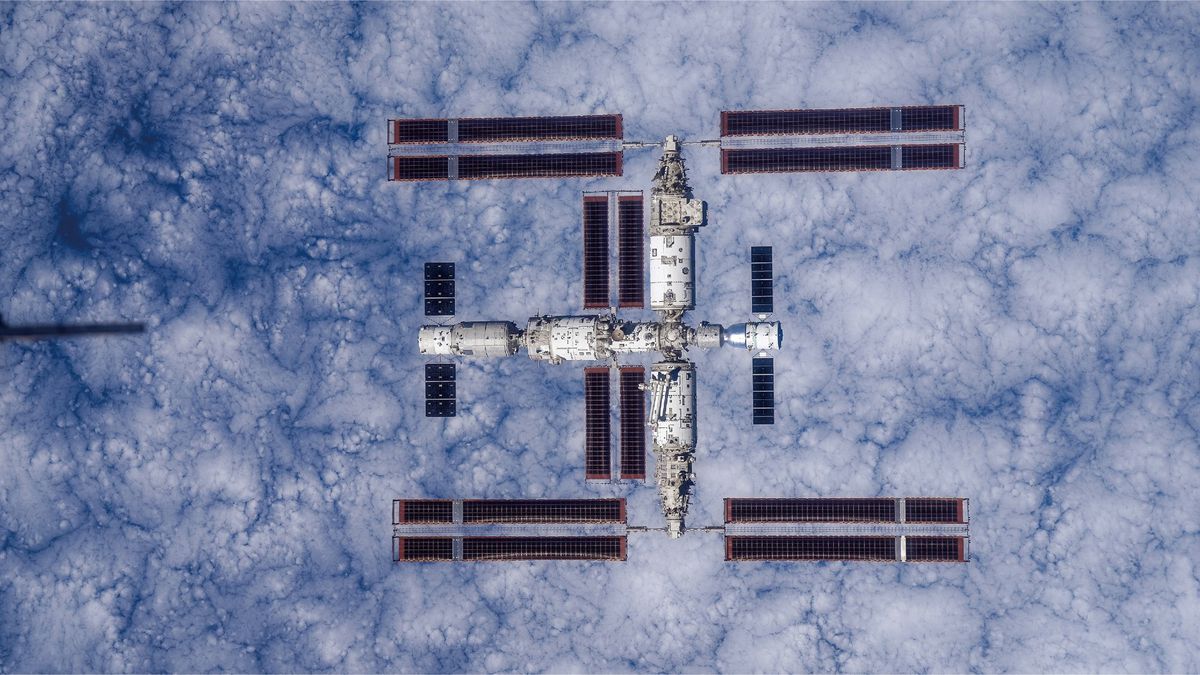The crew of China’s Shenzhou 16 mission took stunning images of the Tiangong Space Station as they departed on their return journey to Earth. Captured with a high-definition camera, these photos provide a full and detailed view of the space station’s structure for the first time since its arrival in orbit.
Before leaving, the Shenzhou 16 team transferred control of the space station to the Shenzhou 17 crew, who arrived at Tiangong on October 26. The three Chinese astronauts, including Commander Jing Haipeng, Zhu Yangzhu, and Gui Haichao, left Tiangong on October 30 aboard the return capsule and returned from low-Earth orbit the same day.
As they made their way back to Earth, the crew turned their cameras back toward their former temporary home, capturing breathtaking views of the orbital laboratory above the planet.
Located 217 to 280 miles (340 to 450 kilometers) above the Earth, the Tianhe unit of the Tiangong station arrived in low-Earth orbit in 2021. The first crew, Shenzhou 12, stayed at the station for 90 days, three times longer than any prior mission.
The subsequent launch of the Wentian and Mengtian units in 2022 and 2023 completed the 180-foot (55-meter) long station, which weighs 77 tons and is approximately 20% as large as the International Space Station.
Since the arrival of the first crew, the Tiangong space station, also known as “Heavenly Palace,” has hosted rotating teams of three taikonauts conducting important science experiments. The crew of Shenzhou 16 continued this tradition through scientific exploration, including a spacewalk, vegetable growth, and a live space lecture demonstrating microgravity.
The captivating images captured by the Shenzhou 16 crew provide a glimpse of the current state of Tiangong, but plans are already in place to expand the space station. China’s space agency intends to add three additional modules to bring the total count to six. In addition, the CMSA plans to launch a Hubble-class space telescope called “Xuntian” to accompany the space station, capable of meeting for repairs, refueling, and upgrades.


